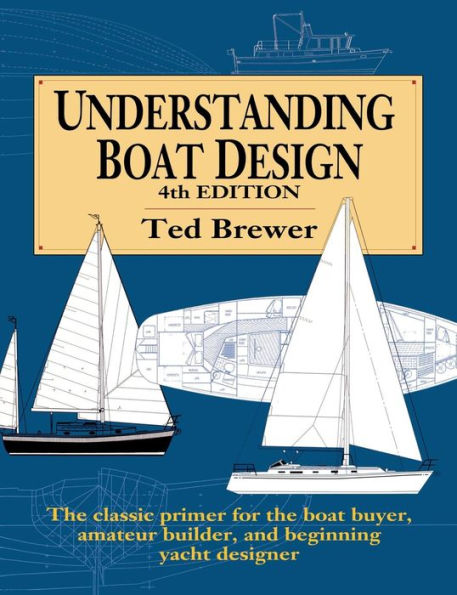For new boating enthusiasts--even if they've been at it awhile--there are scores of burning questions. If one boat has a round bottom and another's is veed, what difference does it make in the way they perform? What are the advantages of a cutter rig over a sloop? Why does one sailor swear by a full keel, while others won't have anything but a fin keel? Why does one powerboat have more flare in its topsides than another? And what is flare? Why do some hull shapes look "right"? How big an engine and propeller will it take to move that powerboat? What elements make a boat safe, or comfortable?
Understanding Boat Design has been the place to look for quick, uncomplicated answers since 1971. Founder of the Yacht Design Institute, a highly respected designer for more than 30 years, and a frequent contributor to SAIL, Cruising World, and other magazines, Ted Brewer has again revised his classic primer. This new volume has been greatly expanded and contains information on many aspects of design that were not even thought of twenty years ago.
Understanding Boat Design has eased tens of thousands of readers into the complex world of small-craft design. It is the ideal introduction for backyard boatbuilders, students of boat design, or someone looking to buy a first boat.
"This tight little book should be required reading."--Soundings
"A natural for those embarking on a first purchase, or the amateur builder."--Sailing
"One of the cleanest and clearest expositions on the elements of yacht design ever published . . . by a naval architect who knows what he is talking about."--WoodenBoat
For new boating enthusiasts--even if they've been at it awhile--there are scores of burning questions. If one boat has a round bottom and another's is veed, what difference does it make in the way they perform? What are the advantages of a cutter rig over a sloop? Why does one sailor swear by a full keel, while others won't have anything but a fin keel? Why does one powerboat have more flare in its topsides than another? And what is flare? Why do some hull shapes look "right"? How big an engine and propeller will it take to move that powerboat? What elements make a boat safe, or comfortable?
Understanding Boat Design has been the place to look for quick, uncomplicated answers since 1971. Founder of the Yacht Design Institute, a highly respected designer for more than 30 years, and a frequent contributor to SAIL, Cruising World, and other magazines, Ted Brewer has again revised his classic primer. This new volume has been greatly expanded and contains information on many aspects of design that were not even thought of twenty years ago.
Understanding Boat Design has eased tens of thousands of readers into the complex world of small-craft design. It is the ideal introduction for backyard boatbuilders, students of boat design, or someone looking to buy a first boat.
"This tight little book should be required reading."--Soundings
"A natural for those embarking on a first purchase, or the amateur builder."--Sailing
"One of the cleanest and clearest expositions on the elements of yacht design ever published . . . by a naval architect who knows what he is talking about."--WoodenBoat

Understanding Boat Design (H/C)
158
Understanding Boat Design (H/C)
158Hardcover(4th ed.)

Product Details
| ISBN-13: | 9780071837972 |
|---|---|
| Publisher: | McGraw Hill LLC |
| Publication date: | 11/22/1993 |
| Edition description: | 4th ed. |
| Pages: | 158 |
| Sales rank: | 528,399 |
| Product dimensions: | 7.50(w) x 9.25(h) x 0.44(d) |
